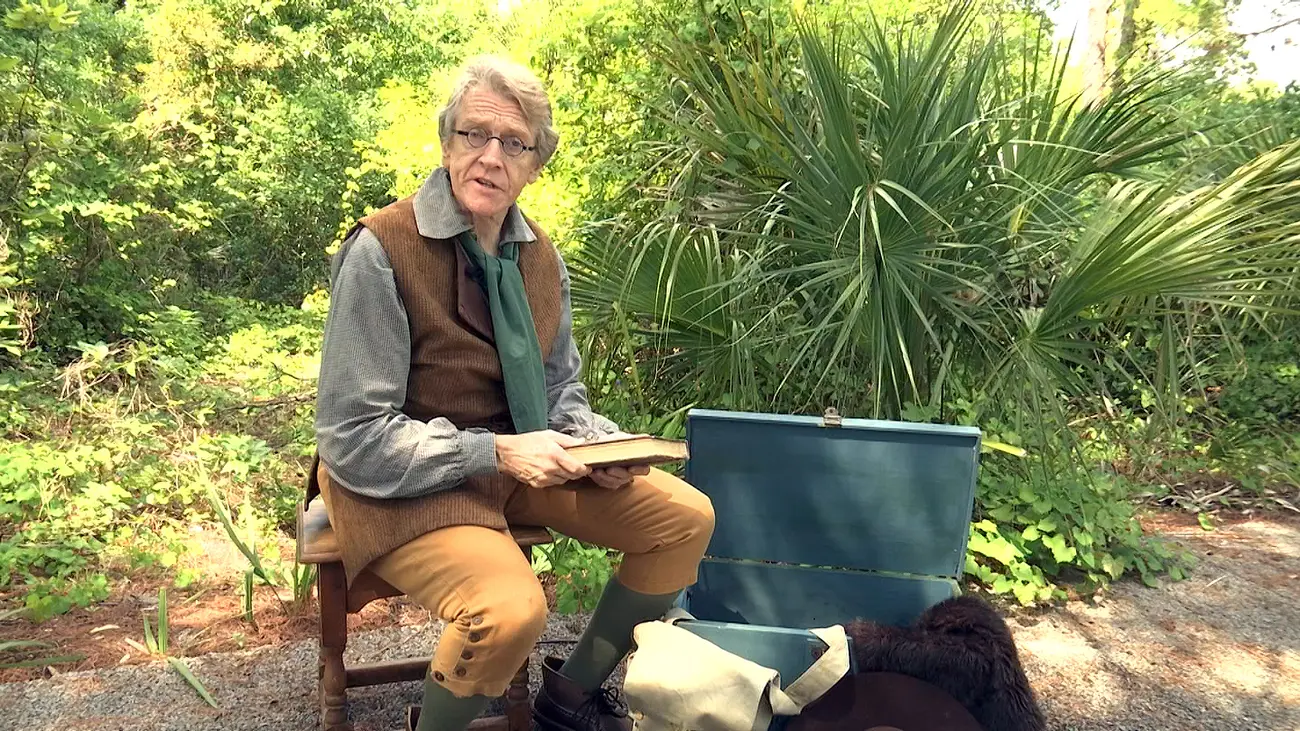William Bartram fought alligators, befriended Seminoles, and meticulously documented the flora and fauna of eighteenth century Florida.
His book “Travels through North and South Carolina, East and West Florida, the Cherokee Country, the Extensive Territories of the Muscogulges, or Creek Confederacy, and the Country of the Chactaws, Containing an Account of the Soil and Natural Productions of Those Regions, Together with Observations on the Manners of the Indians,” known today as “Bartram’s Travels,” is a classic work of Florida literature.
William Bartram was a naturalist, botanist, artist, and explorer who followed in the footsteps of his father, John Bartram.
“Without his father’s influence, William would have never gotten interested in botany,” says J.D. Sutton, actor and author of the one-man play “William Bartram: Puc Puggy’s Travels in Florida.”
“Following the French and Indian War when Spain ceded Florida to England, John Bartram had been named botanist to the King of England. He charged John to explore the Florida territory to see what might be there, what the potentials were in the country,” says Sutton.
In 1765, the 14 year old William Bartram joined his father on an expedition up the St. Johns River. William was so taken with Florida that he attempted to establish himself as a farmer at Fort Picolata, but the effort failed. He returned to Florida in 1774 as part of a four year trek through what is now the southeastern United States, documenting the plants, animals, and inhabitants of the region.
Bartram sailed to Amelia Island and toured Indian mounds. He took the Intracoastal Waterway to the St. Johns River, exploring the area that would become Jacksonville. He traveled up and down the St. Johns River and visited what are now Micanopy, the Paynes Prairie Preserve State Park, Astor, and Blue Spring. Later in 1774, he traveled the Suwannee River.
While collecting seeds and meticulously documenting Florida’s natural environment, Bartram interacted with Seminole Indians. He found the native population to be very friendly and welcoming. The Seminoles gave Bartram the nickname “Puc Puggy,” which means ‘flower hunter.”
“I think it was kind of a put down which he didn’t quite get,” says Sutton. “He was just honored to be named ‘the flower hunter’ by the chief, and given permission to explore the territory around Tuscawilla for collecting medicinal herbs and plants, and writing about them and identifying them, and sending them on to England and to his father’s garden in Philadelphia.”
Part of what makes Bartram’s “Travels” such a useful resource and engaging work today are its detailed drawings. Bartram was a skilled artist.
“He was a brilliant illustrator,” says Sutton. “His drawing of the franklinia tree that they found on the Altamaha River is probably his best known. But he did pages and pages of illustrations which were then hand-colored and sent to his patron in London. They’re still there in the British Museum.”
When Bartram’s “Travels” was first published in 1791, it was not universally praised. Some critics found the writing style overly Romantic. Some doubted the authenticity of Bartram’s accounts of his fighting with snakes and alligators, and his relations with the Seminoles. The Florida that Bartram described seemed so exotic to some readers that they compared his book to the fantasy “Gulliver’s Travels” by Jonathan Swift.
Bartram’s “Travels” is admired and respected by modern audiences.
“It’s a great time capsule of what Florida was like in the mid-1700s,” says Sutton.
“He talks about flocks of the Carolina parakeet so numerous they block the sun. We don’t have that anymore, because they’re extinct, but we’ve got that visual image of what it was like. He describes gopher tortoises, which they hadn’t seen before, that are so big that a man could stand on top of them. They’re wonderful images, and that’s what makes Bartram fun.”
J.D. Sutton will perform his one-man show “William Bartram: Puc Puggy’s Travels in Florida” at Harry P. Leu Botanical Gardens in Orlando, Thursday, April 16 at 7:00 pm. The free performance is presented by the Orange Audubon Society. Sutton’s Chautauqua-style presentation includes an interactive element with the actor answering audience questions as William Bartram.
Bartram would feel right at home among the lush Florida foliage of Leu Gardens.
Dr. Ben Brotemarkle is executive director of the Florida Historical Society and host of the radio program “Florida Frontiers,” broadcast locally on 90.7 WMFE Thursday evenings at 6:30 and Sunday afternoons at 4:00, and on 89.5 WFIT Sunday mornings at 7:00. The show can be heard online at myfloridahistory.org.
